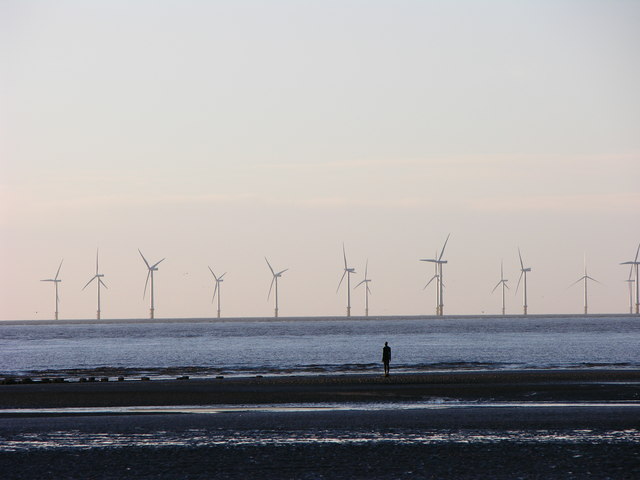Offshore wind development in Maryland seen higher cost option, IER says

Proposals to advance offshore wind development near Ocean City, Maryland, are costly options to generate electricity, according to a recent analysis by the not-for-profit Institute for Energy Research.
In 2017, Maryland increased the state’s renewable portfolio standard to 25 percent by 2020 from 20 percent by 2022. In order for Maryland to reach its goal of 25 percent of its electricity being generated by renewable sources by 2020, it is estimated that at least 2.5 percent will need to come from offshore wind, IER said.
According to the Energy Information Administration’s 2018 annual energy outlook, offshore wind turbines are the second most expensive generating technology, behind only solar thermal.
EIA estimates that the levelized generating cost of an offshore wind turbine coming on-line in 2022 would be 13.8 cents per kilowatt hour in 2017 dollars — nearly 3 times more than a natural gas combined cycle plant and more than twice as much as onshore wind, IER said in its report.
“Maryland electricity consumers and taxpayers will be paying more for electricity produced from these offshore wind farms due to their higher cost and subsidization,” IER said on July 9.
Last summer, the Maryland Public Service Commission (PSC) approved offshore wind renewable energy credits for the construction of wind turbines in the Atlantic Ocean off the coast of Ocean City. The Bureau of Ocean Energy Management (BOEM) is currently reviewing the project proposals from U.S. Wind and Deepwater Wind.
U.S. Wind’s initial proposal involved the construction of 62 wind turbines at least 14 miles offshore in a $1.4 billion project. Additionally, Deepwater Wind has proposed a 15-turbine, $720 million project, known as the Skipjack Wind Farm, which would be situated north of the U.S. Wind project.
Under the Maryland Offshore Wind Energy Act of 2013, the projects can be built 10-30 miles off the Maryland coast.
However, Ocean City officials have adopted a resolution in opposition of permanent offshore wind turbines that are visible from the city. City officials do not want the turbines to be seen by tourists, who flock to the resort town in the summer. Local officials fear it will drive tourists to neighboring beach resort towns.
According to IER, U.S. Wind has offered Ocean City officials incentives, including ‘free’ electricity and community reinvestment, to reconsider its position, but they have not budged. Ocean City officials have called the community benefits package vague and undefined. They believe the money would be better spent on relocating the wind turbines further east.
U.S. Wind has offered to scale back its project to just 32 turbines at least 17 nautical miles from shore.
Ocean City officials asked the Maryland PSC to reconsider project approval if the turbines would be larger than the 4-6 megawatts (MW) for which they were authorized, and the developer is required to notify the PSC of any material change to the project. As of today, U.S. Wind has not filed any requests with the commission of changes to its turbine size, according to the PSC.
Meanwhile, BOEM is currently conducting an environmental assessment of U.S. Wind’s projects.
The net cost to ratepayers associated with the commission’s approved subsidies for the projects are projected to be less than $1.40 per month for residential customers and less than a 1.4 percent impact on the annual bills of commercial and industrial customers, the PSC said in May 2017 when the projects were approved. At the time, commissioners said that costs were kept as low as possible in order to maximize the investment and benefit for the state’s electric customers.
In its analysis, IER noted that Germany and Denmark, which have embraced offshore wind development, have residential electricity prices that are three times higher than those in the United States. IER also cited the “unique transmission concerns” with offshore wind when compared with onshore wind, which it said adds to its cost.
